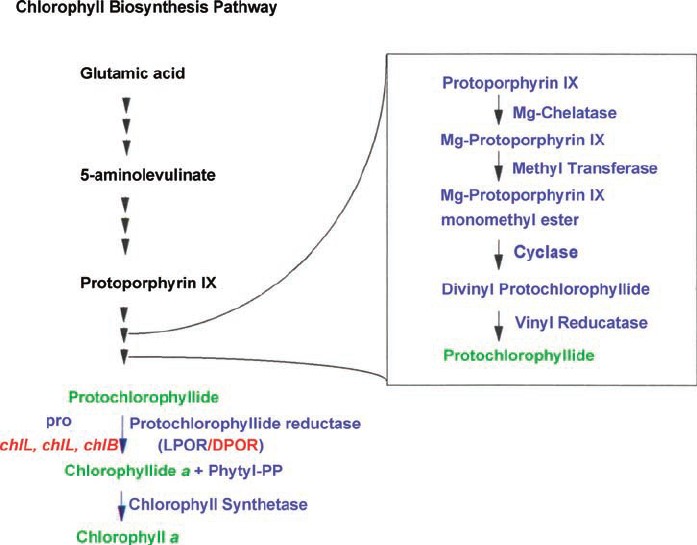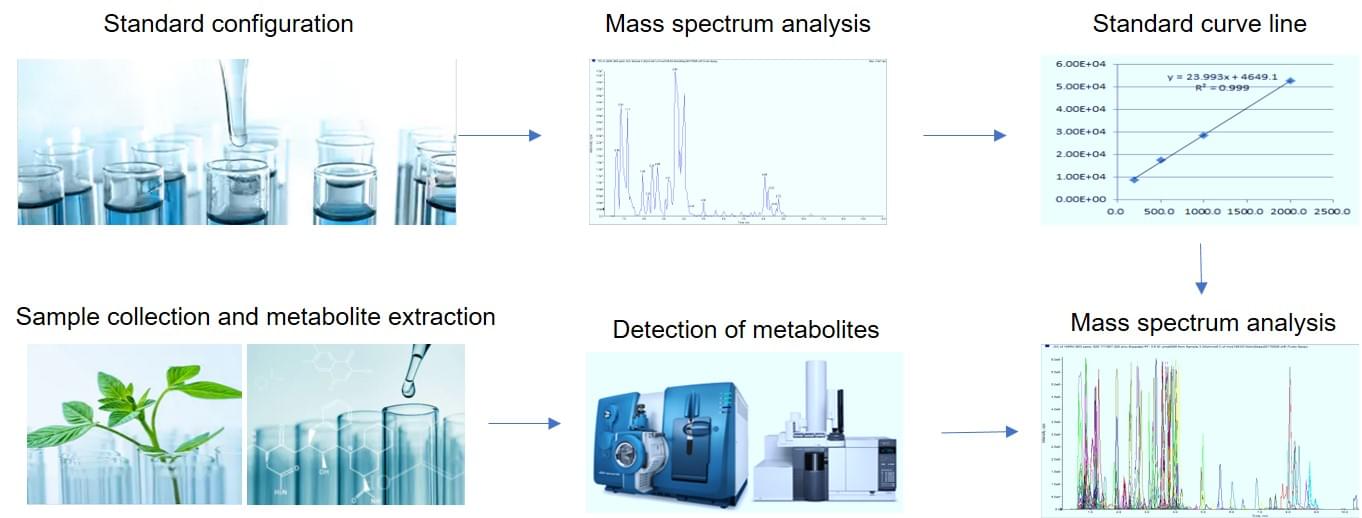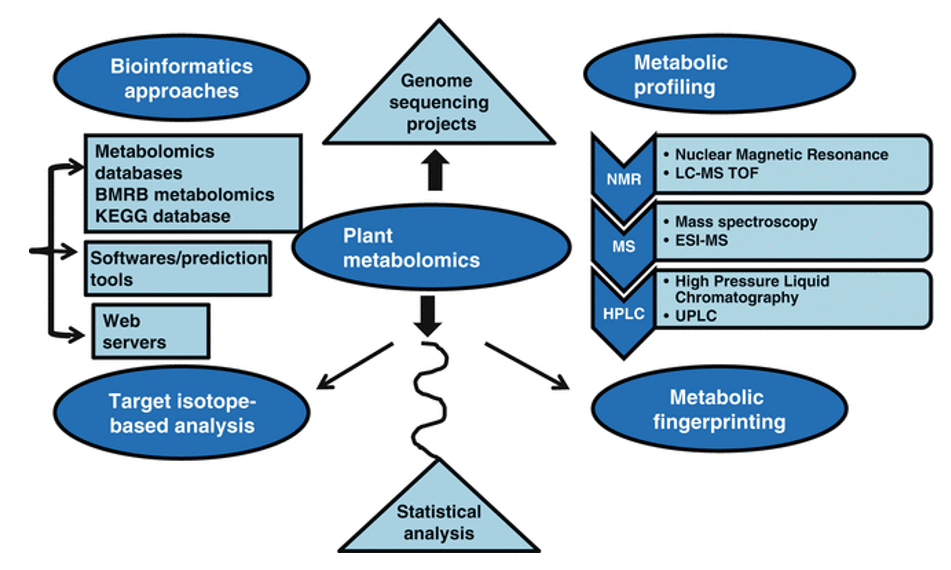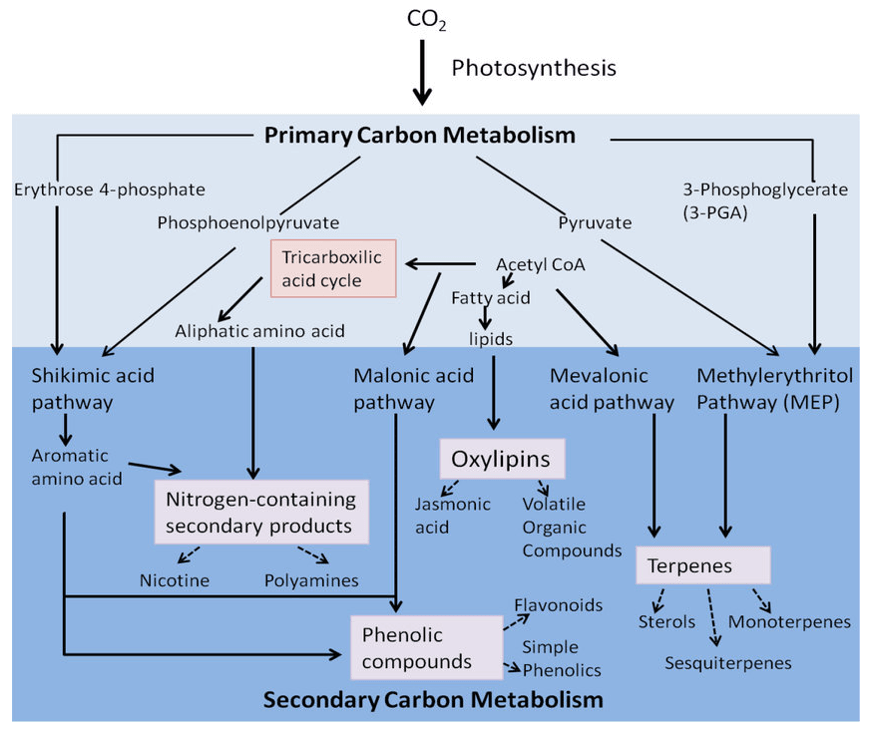Chlorophyll is a type of green pigment contained in higher plants and all other organisms capable of photosynthesis. There are many types, such as chlorophyll a, b, c and d, f, as well as bacterial chlorophyll and green bacteria chlorophyll. Chlorophyll absorbs most of the red and violet light, but reflects green light, so chlorophyll appears green. However, chlorophyll is not very stable and can be decomposed by light, acid, alkali, oxygen, and oxidants. The chlorophyll molecule contains a porphyrin ring like a head, a phytol like a tail, and a magnesium atom in the center of the porphyrin ring. Chlorophyll molecules absorb visible light through changes in single and double bonds in the porphyrin ring, and phytol is inserted into the thylakoid membrane. Chlorophyll plays a central role in the light absorption stage of the photosynthesis process of plants, and participates in the global carbon cycle through this process. Chlorophyll is also very important to the human body. It has many uses such as hematopoiesis, providing vitamins, maintaining enzyme activity, detoxification, and disease resistance.
 Chlorophyll biosynthesis pathway (Picture from Qi, Cheng et al., 2008)
Chlorophyll biosynthesis pathway (Picture from Qi, Cheng et al., 2008)
Applications of chlorophyll analysis
The study of plant growth and development, such as differentiation, maturation, senescence, and apoptosis.
Research on agronomic traits and coloring mechanism.
Research on Light Morphology.
Medical health research such as detoxification and disease resistance Uncover plant's responses to biotic and abiotic stresses.
Targeted metabolomics based on mass spectrometry can quantitatively analyze chlorophyll in a more sensitive and more accurate manner. With decades of experience in mass spectrometry services, Creative Proteomics supports the qualitative and quantification of multiple types of chlorophyll, and has a good record. We can meet your specific project requirements from sample extraction and detection to bioinformatics.
List of detectable chlorophyll at Creative Proteomics
※The project items are constantly being updated, not only those listed, please contact our staff via email to get more latest information and related information.

Technical route
Mass spectrometry detection of standard and standard curve preparation
Mass spectrometry detection of samples
Raw data preprocessing
Absolute quantification of target metabolites
Analysis of differences between groups
PCA analysis
Cluster analysis
Extended analysis, such as Metabolite screening, KEGG pathway analysis and hierarchical clustering
Technical advantages
Strong specificity
High detection sensitivity
Achieve absolute quantification
Quantification is accurate enable analysis of plant hormones present in a variety of plant species at cell or tissue level
Creative Proteomics has leading technology, first-class R&D and production equipment, and has established a complete plant targeted metabolome service system, making the upstream and downstream experiments seamlessly connected. You can also perform personalized customization services at the same time in the data analysis stage. It also has high-quality after-sales service to help you analyze the project's final report and help you answer your doubts. If you want to know more, please contact us immediately.
For Research Use Only. Not for use in diagnostic procedures.


 Chlorophyll biosynthesis pathway (Picture from Qi, Cheng et al., 2008)
Chlorophyll biosynthesis pathway (Picture from Qi, Cheng et al., 2008)








